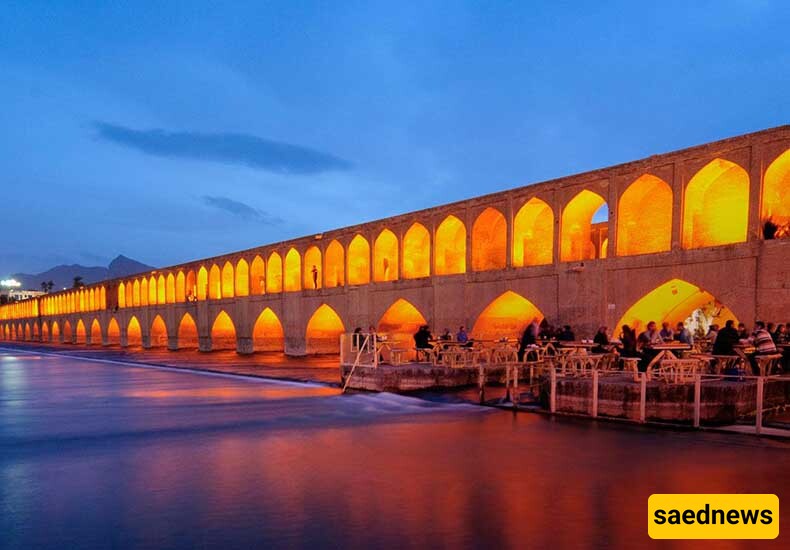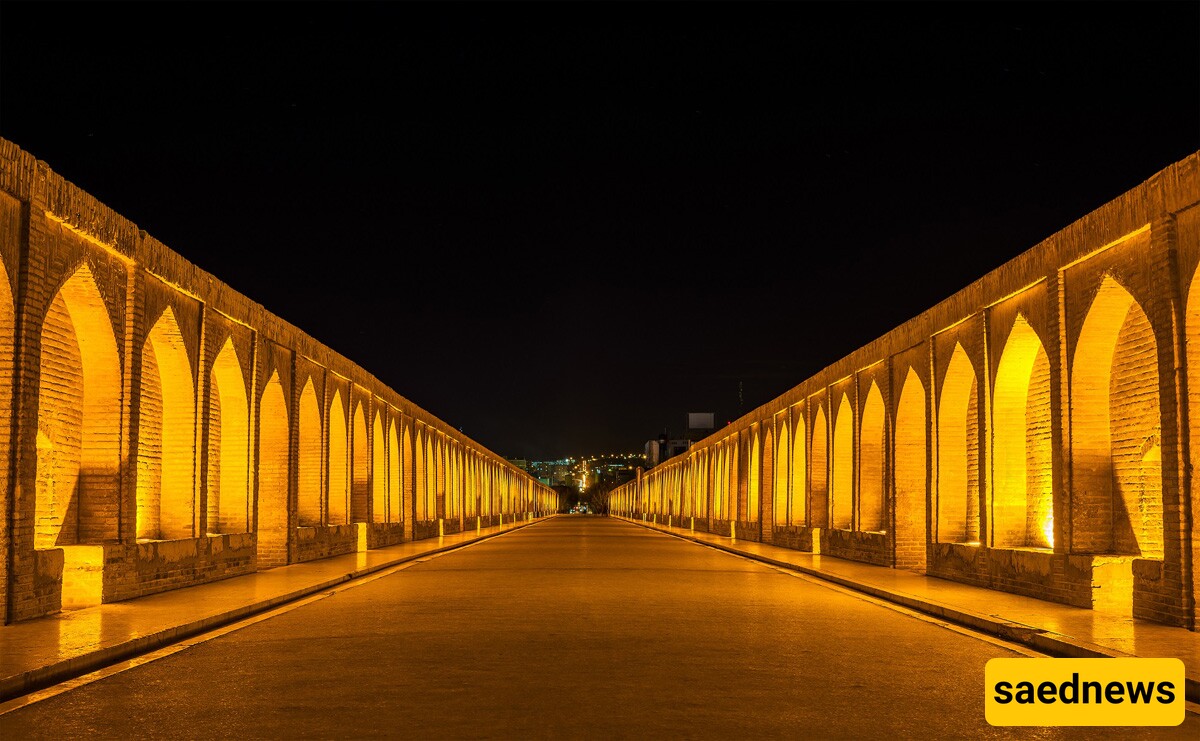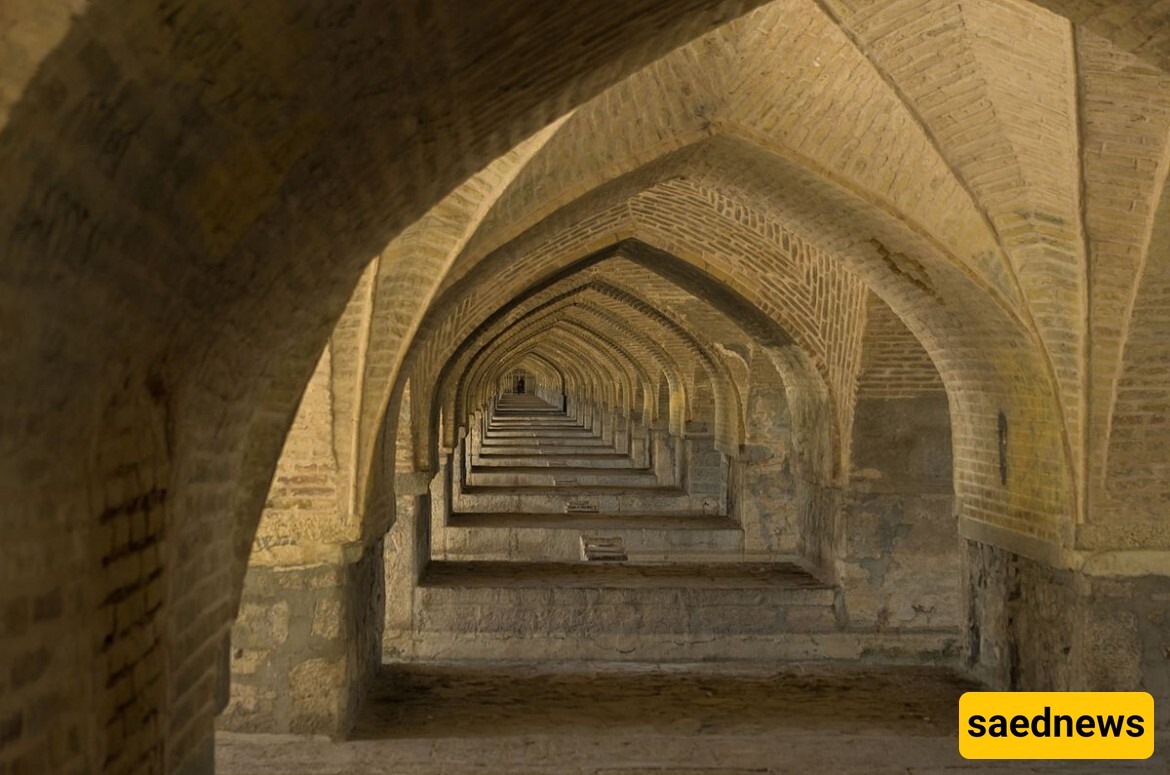SAEDNEWS: The Si-o-se-pol Bridge in Isfahan, Iran, is a historic marvel from the Safavid era, renowned for its unique 33-arch design. A symbol of Persian art and community, the bridge continues to be a major cultural and architectural attraction.

Constructed in the early 1600s during the Safavid period, Si-o-se-pol Bridge is one of Isfahan's most famous landmarks and a classic example of Persian architecture. Spanning the Zayandeh River, this 297-meter bridge is celebrated for its symmetrical arches, functional design, and cultural significance. Today, it remains a timeless structure, admired for its beauty and role as a symbol of Isfahan's rich heritage.
Commissioned by Shah Abbas I in 1602 and managed by his chancellor, Allahverdi Khan, Si-o-se-pol—meaning "Bridge of 33 Arches"—was designed to link parts of Isfahan and to enhance the city's status as the Safavid capital. The bridge's design showcases harmony in its symmetrical arches and skilled stone and brickwork. Each of the 33 arches was carefully planned for both stability and aesthetic appeal, making the bridge an impressive architectural achievement.
More than just a crossing, the bridge was designed for public events and gatherings. Its wide deck allows for easy pedestrian access, offering scenic river views, while its alcoves and benches provide spaces for people to gather, adding to its social significance.

Beyond its function as a bridge, Si-o-se-pol has become a beloved gathering place for locals, a spot for music, storytelling, and socializing, particularly during sunset when the bridge is beautifully illuminated. Its arches naturally enhance acoustics, making it ideal for live music performances. Over the years, the bridge has hosted numerous celebrations and gatherings, particularly during Nowruz, the Persian New Year, when it’s decorated for festivities, making it a community hub for generations.
The bridge’s engineering reflects impressive skill, considering the resources and techniques of the time. Built primarily with limestone, brick, and mortar, Si-o-se-pol was designed to withstand river fluctuations and seasonal flooding. The 33 arches evenly distribute weight, adding to the bridge's durability. This resilient structure has endured for over 400 years, surviving environmental changes and the pressures of time.
To preserve the bridge, maintenance efforts continue, although environmental shifts affecting the Zayandeh River have posed challenges. Iranian authorities and heritage groups are committed to protecting the bridge from erosion to ensure its survival.

As one of Iran’s most iconic sites, Si-o-se-pol attracts visitors worldwide who are drawn to its beauty and cultural significance. Alongside other landmarks like Naqsh-e Jahan Square, the bridge enhances Isfahan's appeal as a UNESCO World Heritage site. Its arches and reflections on the water make it a popular location for photos, especially at dawn and dusk.
International recognition of the bridge underscores the importance of conserving Iran's historic sites. As global interest in Persian architecture grows, Si-o-se-pol stands as a prime example of Safavid-era artistry and ingenuity.
Si-o-se-pol Bridge stands as an enduring symbol of Safavid-era achievement and cultural heritage. Its architectural grandeur and community role have made it a beloved landmark in Isfahan. This bridge continues to connect people to the legacy of Persian design and history, serving as a reminder of the importance of cultural preservation.

